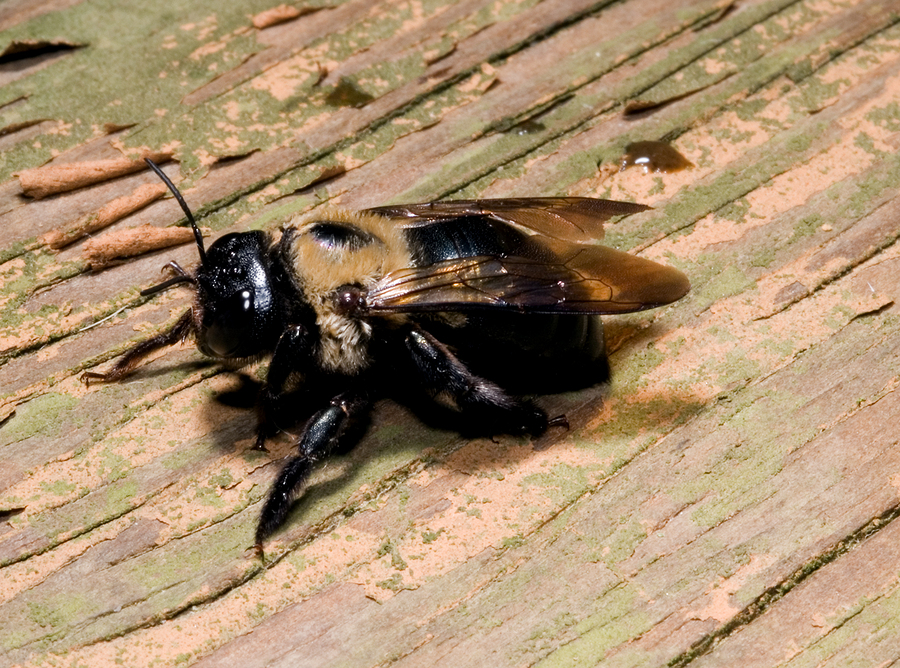READY TO GET STARTED?
REQUEST A FREE ESTIMATE
Fill out the form below or call (888) 466-7849 for a free, no-obligation estimate.

Spring brings warm weather and new plant life that has been missing all winter. Unfortunately, that means the reappearance of several pests, including the carpenter bee. They are large and awkward looking. They also have the tendency to hover in place for no apparent reason, at least until another one flies up. Then they do some aerial fighting, and anyone in close proximity is at risk of being bumped by the bees.
Carpenter bees are known for nesting in wood. The female bores in to a suitable piece of wood and lays her eggs in individual cells leaving them with a supply of bee bread and nectar to feed on once they hatch. The eggs are laid in individual chambers, so every bee has their own “room”. They all hatch and emerge at the same time. They overwinter as adults in old nest chambers, or other suitable places. The males, or drones, do not bother the wood, they hover around waiting for the females. If another male enters their territory, they will fight briefly to make sure their area is not overtaken. The males will not sting you, but the female may if she feels threatened.
Carpenter bees prefer unfinished wood. You can prevent carpenter bees from nesting in areas such as fences, decks, and porches by painting or sealing the wood. If you have had carpenter bee activity in the past, plug the exit holes and then paint or seal over them. For existing carpenter bee infestations, contact your local bee removal company.
Categories